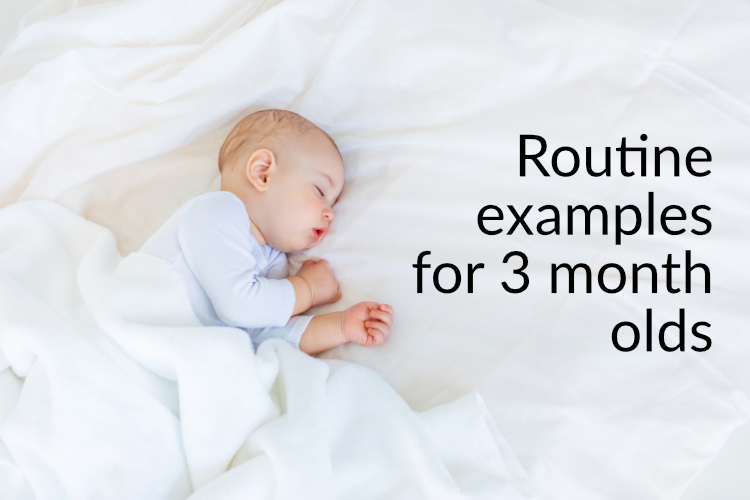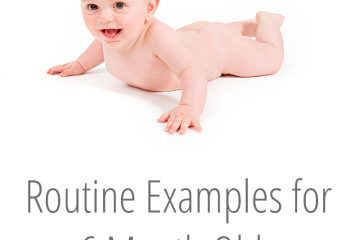This article includes two different routines that a three month old could be following.

By the third month your baby will be able to stay awake for between 1 hour and 1.5 hours before needing to have a sleep.
If your baby is only able to manage an hour before sleepy time kicks in, don’t panic! You are far better off having short awake times to avoid your baby becoming overtired which will lead to trouble falling asleep themselves and poor quality sleep overall.
If you are not noticing any tired signs at all, but finding your baby is hard to get down at the 1.5 hour mark, you have probably missed the ‘window’. Next time, try putting them down 15 minutes earlier. It is very rare for a 3 month old to be capable of more than 1.5 hours of awake time without consequences for the rest of the day.
If you notice tired signs at the 45 minute mark, don’t ignore them! A lot of parents assume this is too early for a nap and put the yawning or fussing down to boredom. It may very well be your baby giving you the cue that they are ready to start a wind-down routine. If you act on this cue straight away and start getting them ready for a nap they will more than likely drift off into dreamy land on the 1 hours mark – perfect!
Routine Examples for 3 Month Olds
The first schedule below is a sample routine for a 3 month old who is having a longer nap in the morning, followed by those elusive short 45 minute naps for the rest of the day.
This is an example of a good solid routine, and although many parents don’t like the 45 minute naps, there is nothing wrong with them if your baby is happy and the day is working.
Read more about troubleshooting 45 minute naps here.
- 7:00 Feed and play
- 8:15 Nap
- 10:00 Awake, feed and play
- 11:30 Nap
- 12:15 Awake and play
- 1:00 Feed
- 1:30 Nap
- 2:15 Awake play
- 3:30 Nap
- 4:15 Awake, feed and play
- 5:30 Nap
- 6:15 Awake, bath and bedtime routine
- 7:30 Feed and sleep time
.
The second schedule (below) is a sample routine for a 3 month old< who is having a short nap for the first nap of the day, followed by some lovely longer naps during the rest of the day (a parent’s dream routine!)
(Also notice that this baby’s awake times are getting longer as the day progresses – most babies operate best with a short awake time first thing in the morning, with longer awake times towards the end of the day).
- 7:30 Feed and play
- 8:30 Nap
- 9:15 Awake and play
- 10:30 Feed
- 10:45 Nap
- 12:45 Awake and play
- 1:30 Feed
- 2:30 Nap
- 4:30 Awake, feed and play
- 5:30 Bath and bedtime routine
- 6:45 Feed and bed time
- 10:00 Dreamfeed
Sleep Problems?
Most sleep problems at this age can be solved in one of two ways.
- Make sure you aren’t keeping your baby up past the recommended “awake time” for their age, and not over stimulating them during this time. Lots of different activities and loud and moving things in their faces can over stimulate them quickly and make it harder for them to relax and go to sleep once they get tired.
- Swaddling. Even if you haven’t swaddled yet, it’s not too late to start. Infact, 3 month olds who are waking themselves up due to increased movement do tremendously well when swaddled, even if they have never been swaddled before.
I recommend the Embe swaddles because they are escape-proof, you can choose the have legs in or out (good for warmer weather) and they also have a nappy change feature which is wonderful for nighttime nappy changes with as little disruption as possible. You can see more about how these swaddles work in the video below.


